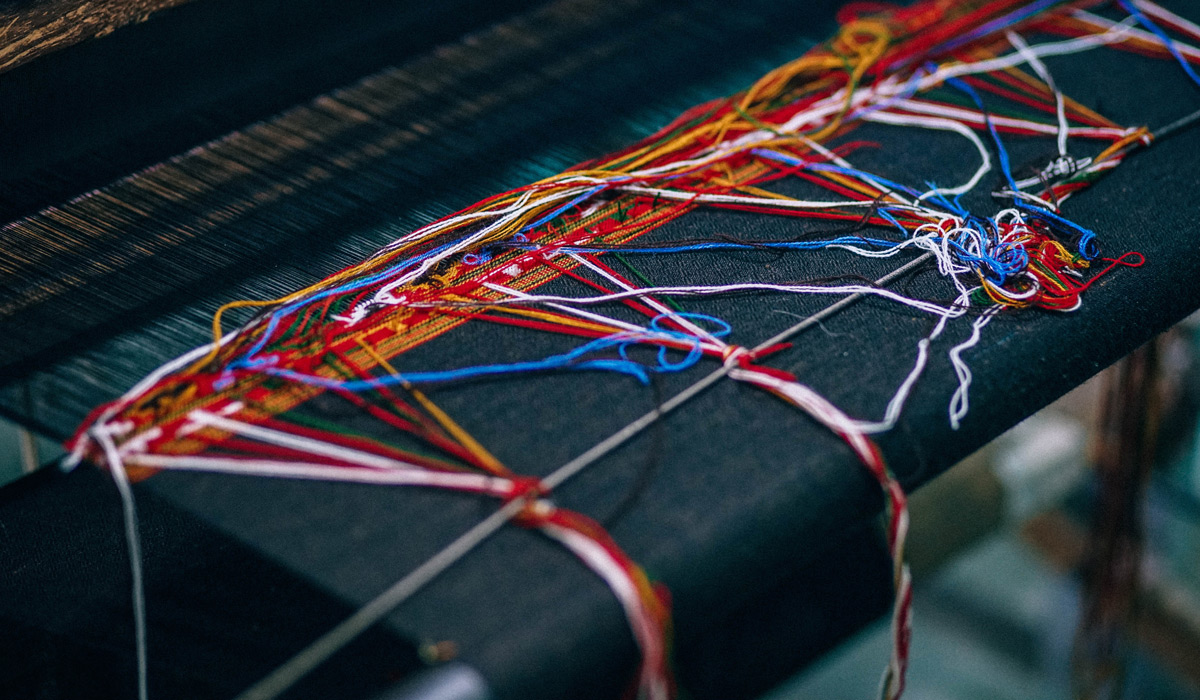Untangling Our Stories

When we uncover unexplored stories of harm, we’re faced with the choice of joining the voice of contempt that shames our broken places, or engaging the story with curiosity, tugging the thread to see how it is woven through the rest of our life. Here, Kellay Chapman writes about a particular story that is part of her life’s tapestry, and about the gift of untangling the knots in that story by engaging it with curiosity rather than contempt.
My sister once had a loom. It was beautiful and mysterious. It made the impossible possible, weaving disparate threads into a piece of art. Yet few things can get as tangled as threads on a loom. If one is pulled out, the whole work becomes a jumbled mess. Sometimes, when I refuse to own what is true in my life, I feel like a knot on a loom. I pull out stories of shame and harm while simultaneously trying to preserve the tapestry. But when I try to leave these threads out, I can’t keep the art of my life intact. We don’t make sense without our stories, especially our stories of harm.
The summer I was 11 my grandmother took my sister and me shopping. I remember being in a dressing room. My grandmother on a bench, long legs crossed, nodding her head in approval as my sister modeled a blouse. She looked at my sister and told her how much money she would spend on her, then she looked at me, dropped her voice to a more disapproving tone, and said how much she would spend on me. My sum was significantly less than my sister’s. I can’t remember if I bought anything, but I know I didn’t want to. I felt embarrassed. I felt like a burden. I felt like I shouldn’t be there. My sister was starting college that year and I wasn’t doing anything special. I didn’t want my grandmother to spend anything on me; her partial attention was more painful than no attention.
It took me a long time to be curious about the impact of this story, to be a story sage on my own behalf, but the truth is I still have a hard time buying clothes. There are lots of clothes I like. I love dreaming up great outfits as I go to sleep, however I rarely buy a piece of clothing. I think long and hard and hard and long. I pick things up. I put them back. I fill my virtual shopping cart. I empty it. If I am in a store with items in my cart, I feel the heat rising in my face—I don’t want other shoppers to see what I’ve picked out. I want to get past the dressing room attendant as soon as possible. When I finally do purchase something, I often return it or give it away after wearing it only a few times.
With contempt I ask myself, “Why I do this? Why can’t I just buy clothes like everyone else? Why does it feel like such a big deal to me?” Evil seems to join the chorus in my head: “Why are you like this?” Yet, I am learning, curiosity allows me to answer. To find the pieces I want to pull out of my life tapestry. The threads I am committed to hiding. Curiosity invites us all to take back what is ours, even if painful, so we can be whole. So we can understand and be understood. When the accusation of, “Why?” becomes a curious question we have entered sacred waters. Now we have the chance to tend our stories of harm.
Curiosity invites us all to take back what is ours, even if painful, so we can be whole.
When I made space to look for an answer to why it is so difficult for me to buy clothes, I realized buying clothes triggers the story of my grandmother. A feeling that I must choose very carefully and stay within a tight sum. I don’t want anyone to see me wanting more than I can afford. I am ashamed that I was not as worthy as my sister to my grandmother, and I’m still trying to hide. l hide in racks of clothes and persistent indecision. Being curious with this pattern has brought me to a deeper understanding of myself, and to grief for my struggle of feeling worth less.
This journey through why with curiosity has not “fixed” me. My browsers are still cluttered with empty and full shopping carts. Yet curiosity allows me to finger through my stories and find kindness for the little girl I was and woman I am. I can now look tenderly on the 30-year-old woman I am who still flushes when she decides to purchase a piece of clothing. This is the power of curiosity, it leads us away from shame and contempt and allows us to re-enter our stories with compassion. It helps turn knots on a loom into art. And, maybe even a beautiful dress.
